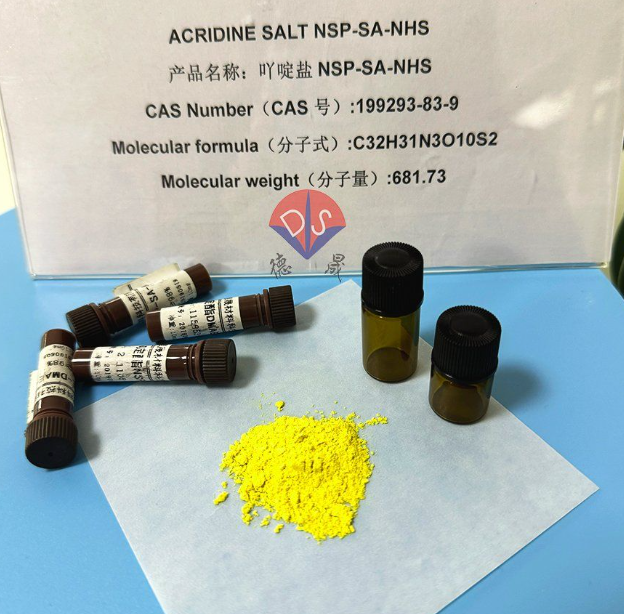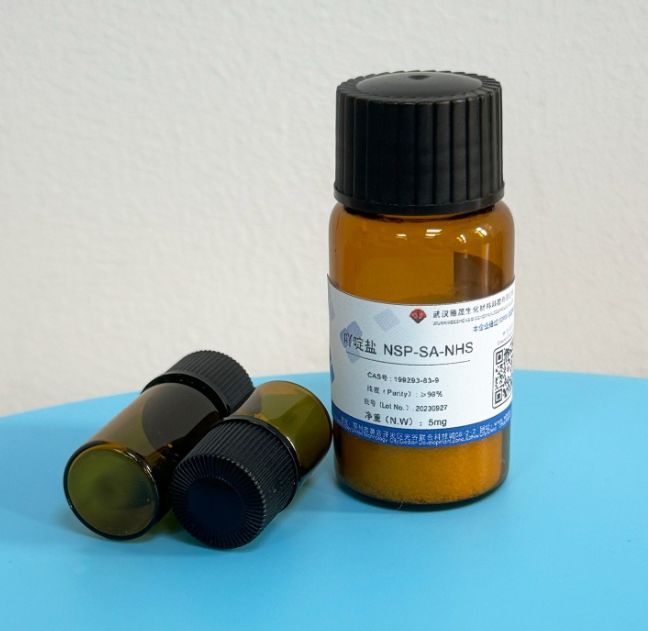The competition of light in in in vitro diagnostics: Who is the master of the rise and fall of the "three swordsmen" of chemiluminescence?
Release time:
2025-06-14
In the field of modern medical testing, chemiluminescence technology has become an important pillar of in vitro diagnostics due to its high sensitivity, wide linear range, and excellent stability. This technology releases photons through chemical reactions, like "messengers of light," revealing trace substance information in samples and providing a basis for clinical diagnosis. This article will take you to a deeper understanding of the three mainstream chemiluminescence technologies and their key roles in medical testing.

Chemiluminescence reagent acridine ester nap-sa-nhs
Alkaline phosphatase (ALP) - glow type
Alkaline phosphatase catalyzed luminescence belongs to glow, and when ALP labeled on antigens or antibodies encounters a specific substrate AMPPD, it catalyzes the production of sustained and stable photon emission. This "glow type" luminescence mode can last for several tens of minutes, providing ample time window for detection.
The core advantage of ALP lies in its excellent qualitative performance. Due to the long luminescence time and relatively simple instrument design, substrate addition and photon detection can be performed separately. This characteristic makes it particularly suitable for high-throughput detection scenarios and is currently widely used in fields such as infectious disease screening and tumor biomarker detection. The reaction catalyzed by ALP has a wide linear range and can accurately detect various analytes from trace amounts to high concentrations, meeting diverse clinical needs.
Acridine ester (AE): flash type
Unlike the glow of ALP, acridine ester belongs to the category of flash. AE markers can directly emit light under alkaline conditions without enzyme catalysis, but the luminescence duration is extremely short, usually reaching its peak within 1-2 seconds and rapidly decaying.
This "flashing" characteristic places high demands on the detection system. The instrument must use "in-situ sampling" technology to complete substrate addition and photon detection at the same location. Despite the high requirements for equipment, AE has significant advantages such as extremely low background interference and excellent signal-to-noise ratio, and the labeling process is simple without changing the molecular structure. These characteristics make it stand out in high timeliness scenarios such as small molecule substance detection and emergency testing.
Horseradish peroxidase (HRP): glow type
The luminescence mode of horseradish peroxidase also belongs to the "glow type". HRP catalyzes the oxidation and luminescence of substrates such as luminol in the presence of hydrogen peroxide, and the reaction is mild and long-lasting.
The characteristic of HRP is its excellent flexibility. HRP has a small molecular weight, high labeling efficiency, and is compatible with multiple substrate systems. Meanwhile, HRP has good stability and relatively low cost, and is widely used in routine projects such as hormone detection and cardiac biomarker detection. By adding enhancers, the luminescence efficiency of the HRP system can be significantly improved, resulting in a higher level of detection sensitivity.
Breakthrough in Technology Application and Localization
The three chemiluminescence technologies have their own characteristics: ALP is stable and reliable, AE is fast and sensitive, and HRP is flexible and economical. In practical applications, factors such as the characteristics of the detection project, flux requirements, and cost considerations determine the user's choice. With the rapid development of the domestic in vitro diagnostic industry, the quality of domestically produced chemiluminescence reagents has reached an advanced level.

Product packaging
As a professional manufacturer in the field of chemiluminescence, Hubei Xindesheng Material Technology Co., Ltd. focuses on the research and production of high-quality chemiluminescence reagents. The company's product line covers various chemiluminescent markers and substrates such as acridine esters and luminol, providing stable and reliable raw material support for in vitro diagnostic enterprises. New Desheng, with its strict quality control system and continuous innovative research and development, has become a core supplier for many IVD enterprises in China, making important contributions to promoting the localization process of chemiluminescence technology.
News
Contact details
Contact number
Address: C8, Guanggu United Science and Technology City, Ezhou City, Hubei Province
Fax:0711-3704 589
Follow us



